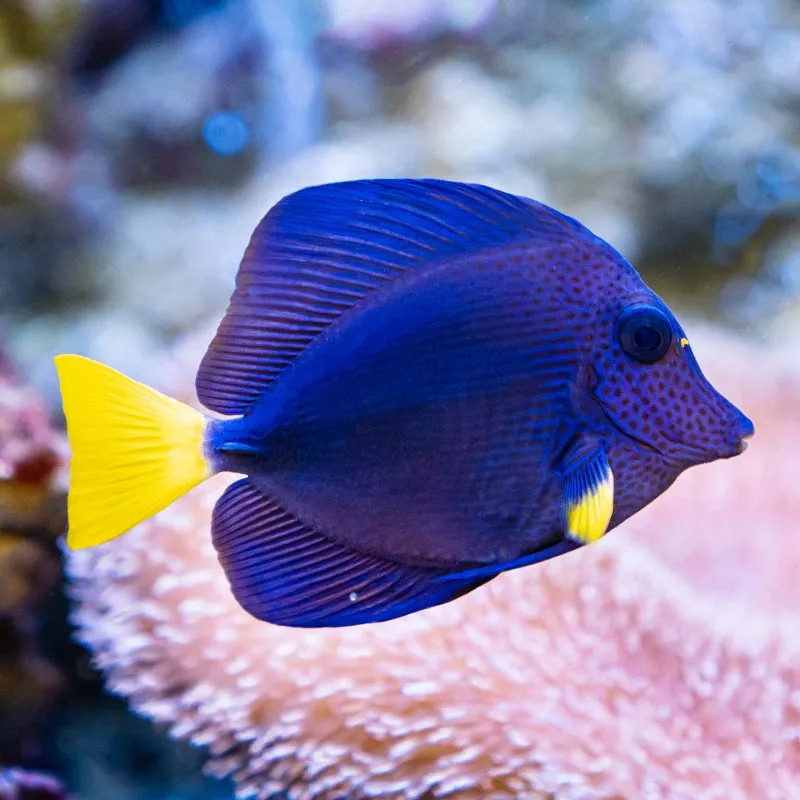Stocks Available
Purple tang, Small
SKU:227058
ZEBRASOMA XANTHURUM
1-2 INCH

Stock Available
Introduction: • Common Names: Purple Tang • Natural Habitat: Primarily inhabits coral-rich areas and rocky reefs in the Red Sea and the western Indian Ocean. Physical Characteristics: • Appearance: Characterized by a deep purple body with subtle horizontal stripes and a bright yellow tail fin, which contrasts vividly with its body color. • Size: Typically grows up to 10 inches (25 cm) in length. • Lifespan: With proper care, can live 10-15 years or more in captivity. Habitat Requirements: • Tank Size: Needs a minimum of 125 gallons due to its active swimming habits and territorial nature. • Water Conditions: o Temperature: 74-80°F (23-27°C). o pH: 8.1-8.4. o Specific Gravity: 1.020-1.025. • Aquascaping: Requires plenty of rockwork to explore and hide in, along with open spaces for free swimming. Diet: • Primary Diet: Herbivorous; naturally feeds on algae and small crustaceans found on rocks and coral. • Supplemental Feeding: In captivity, a varied diet that includes marine-based algae, seaweed, and high-quality pellets is recommended. Adding leafy greens or nori can also help satisfy their grazing needs. • Feeding Frequency: Feed multiple times daily to encourage grazing behavior and maintain good health. Compatibility: • Temperament: Semi-aggressive, especially with other tangs and similar species, though it generally tolerates peaceful tank mates. • Suitable Tank Mates: Best with other peaceful fish, such as wrasses, angelfish, and certain larger species that do not compete for territory. • Incompatibilities: Avoid other tangs with a similar body shape or coloration to prevent aggression, especially in smaller tanks. Care Level: • Difficulty: Moderate; requires an experienced aquarist who can maintain stable water quality and a large aquarium. • Health Monitoring: Susceptible to marine ich and other stress-related illnesses, especially in fluctuating water conditions. Breeding: • Breeding in Captivity: Rarely bred in captivity due to space and environmental challenges. • Spawning: In the wild, purple tangs typically form spawning pairs and release eggs into the water column. Economic Considerations: • Market Demand: Highly sought after due to its striking color and unique appearance. • Pricing: Often priced higher due to limited supply and popularity among saltwater enthusiasts. Conclusion: The Purple Tang is a beautiful and active species, known for its distinctive color and dynamic swimming style. It is ideal for larger, well-established marine aquariums and offers a unique visual appeal. With proper care and a stable environment, it can thrive and become a captivating addition to any reef tank.
Data sheet
16 other products in the same category:
Customers who bought this product also bought: